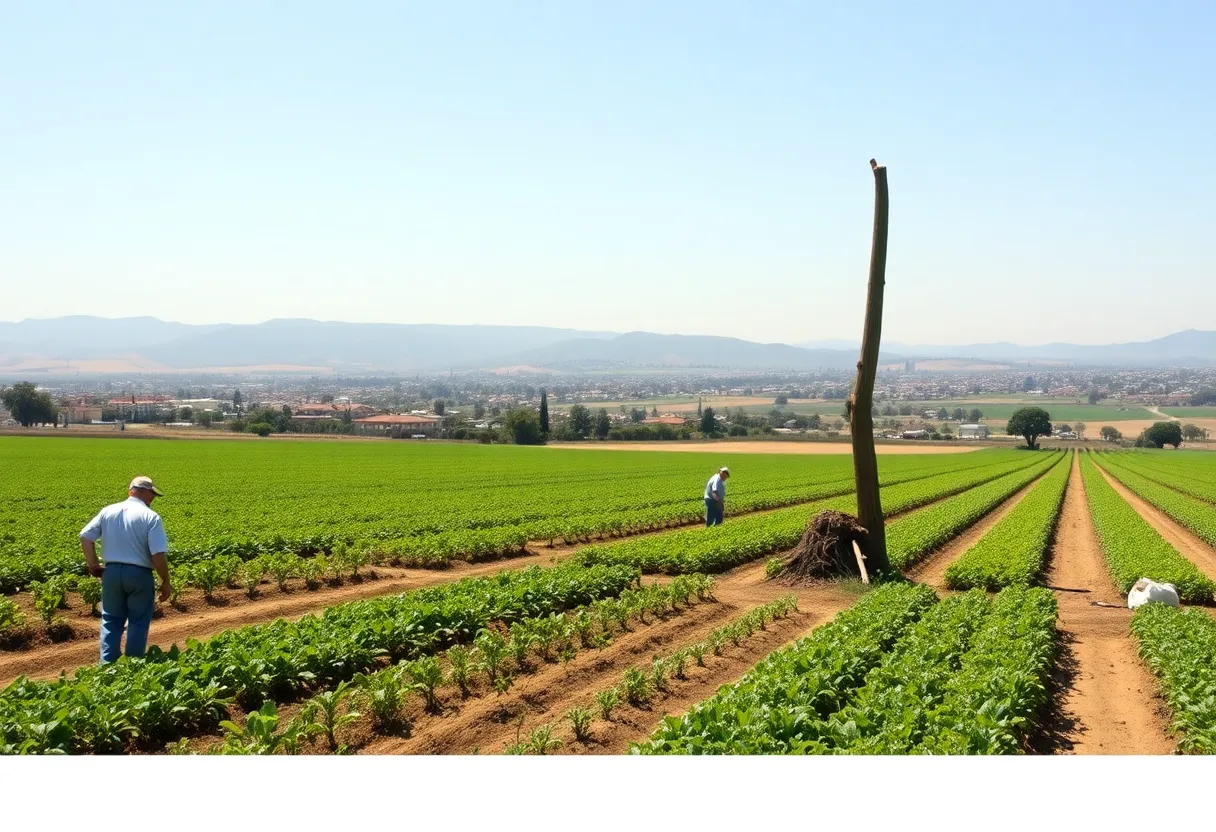California, September 15, 2025
News Summary
California’s agriculture is facing significant challenges, including rising production costs, regulatory hurdles, and competition from other sectors. The state’s agricultural output, which generates around $60 billion annually, is threatened by a 20% decline in farmers over the past decade and increasing production expenses, particularly in crop farming. Recent tariffs have also negatively impacted exports. Stakeholders are urged to explore strategies to balance these challenges and sustain California’s agricultural sector.
California Agriculture Faces Decline Amid Rising Costs and Regulatory Challenges
California’s agriculture remains the state’s leading industry, generating approximately $60 billion annually, but faces numerous challenges that threaten its economic dominance. With competition from sectors like technology and health care increasing, the agricultural industry is reported to be at a critical juncture as highlighted by the California Farm Bureau president, Shannon Douglass. A recent federal census reveals a staggering 20% loss of farmers over the past decade.
A study conducted by Cal Poly-San Luis Obispo indicates that production costs for essential crops, such as lettuce in the Salinas Valley, have surged dramatically due to government regulations, escalating by 63.7% since 2017. This rise amounts to an additional $1,600 per acre. Several factors contribute to these increases, including heightened labor costs from state wage laws, restrictions on well water pumping, and requirements aimed at reducing water diversions from rivers.
The agriculture sector has faced further setbacks this year, notably due to President Donald Trump’s tariffs, which have adversely affected almond exports to China, historically the largest market for California almonds. Alexi Rodriguez, president of the Almond Alliance, reported significant declines in shipments, implying that China could drop out of the top 10 markets for California almonds by year-end.
As competition intensifies from growers in states with lower labor costs, California farmers may be forced to cut back on farm acreage. These challenges reflect a broader trend where agricultural interests in California face diminishing political power. Recent government initiatives, such as Governor Gavin Newsom’s proposal to double subsidies for the film industry, underline this shift, signaling an increased focus on sectors that hold substantial economic weight, such as film, which contributes around $30 billion annually.
The declining acreage dedicated to agriculture correlates with its waning economic importance and influence compared to other industries. California’s economy ranks as the world’s fourth largest, providing significant input to national job creation and business applications, despite projections indicating a slowdown in job growth in various sectors.
Amid these struggles, critics raise concerns over state policies and national economic trends that may jeopardize California’s agricultural future. Ongoing regulatory challenges compounded by fluctuating market conditions pose critical questions regarding the sustainability and adaptability of California’s storied agricultural sector.
Background Context
California has long been synonymous with agriculture due to its favorable climate and extensive land devoted to farming. However, the landscape has shifted as urban development and technological industries gain more foothold, leading to concerns about the state’s ability to maintain its status as a top agricultural producer. The rise of stringent laws and economic competitiveness continue to reshape the dynamics within the industry.
Conclusion
As California’s agricultural sector grapples with substantial challenges, the potential long-term impact on its economic viability and sustainability remains to be seen. Stakeholders are urged to consider effective strategies that balance production demands with the realities of operating in a rapidly changing economic environment.
Frequently Asked Questions
1. What is the current economic contribution of California agriculture?
The agricultural industry in California generates approximately $60 billion annually.
2. How much has farmer numbers declined in the last decade?
California has experienced a 20% loss of farmers according to recent census data.
3. What are some of the costs driving up production in California?
Production costs for crops like lettuce have risen 63.7% since 2017, primarily due to government regulations.
4. How have tariffs affected California agriculture?
The tariffs implemented by President Trump have led to a decrease in almond shipments to China, impacting California’s export market.
5. What other industries are affecting agriculture in California?
Other sectors like technology and film are becoming more prominent in California’s economy, leading to a decline in agricultural influence.
Chart of Key Features
| Feature | Details |
|---|---|
| Annual Revenue | $60 billion |
| Farmer Decline | 20% loss in the past decade |
| Production Cost Increase | 63.7% since 2017 |
| Almond Exports | Decrease due to tariffs |
| Film Industry Contribution | $30 billion annually |
Deeper Dive: News & Info About This Topic
- California Business Outlook Overview
- California Politicians and Agriculture Issues
- California Real Estate and Politics
- California Tech Leaders and Political Dynamics
- California Migration Trends and Politics
- Wikipedia: California Agriculture
- Google Search: California Agriculture Challenges
- Google Scholar: California Agriculture Decline
- Encyclopedia Britannica: Agriculture
- Google News: California Agriculture Issues

Author: STAFF HERE HUNTINGTON BEACH
The Huntington Beach Staff Writer represents the experienced team at HEREHuntingtonBeach.com, your go-to source for actionable local news and information in Huntington Beach, Orange County, and beyond. Specializing in "news you can use," we cover essential topics like product reviews for personal and business needs, local business directories, politics, real estate trends, neighborhood insights, and state news affecting the area—with deep expertise drawn from years of dedicated reporting and strong community input, including local press releases and business updates. We deliver top reporting on high-value events such as the Huntington Beach Surf City USA Marathon, the U.S. Open of Surfing, Fourth of July celebrations at the Huntington Beach Pier, and community festivals at Huntington Beach Central Park. Our coverage extends to key organizations like the Huntington Beach Chamber of Commerce and Visit Huntington Beach, plus leading businesses in retail, hospitality, and outdoor recreation that drive the local economy. As part of the broader HERE network, including HEREAnaheim.com, HERECostaMesa.com, HERESantaAna.com, and HERELosAngeles.com, we provide comprehensive, credible insights into Southern California's dynamic landscape.





